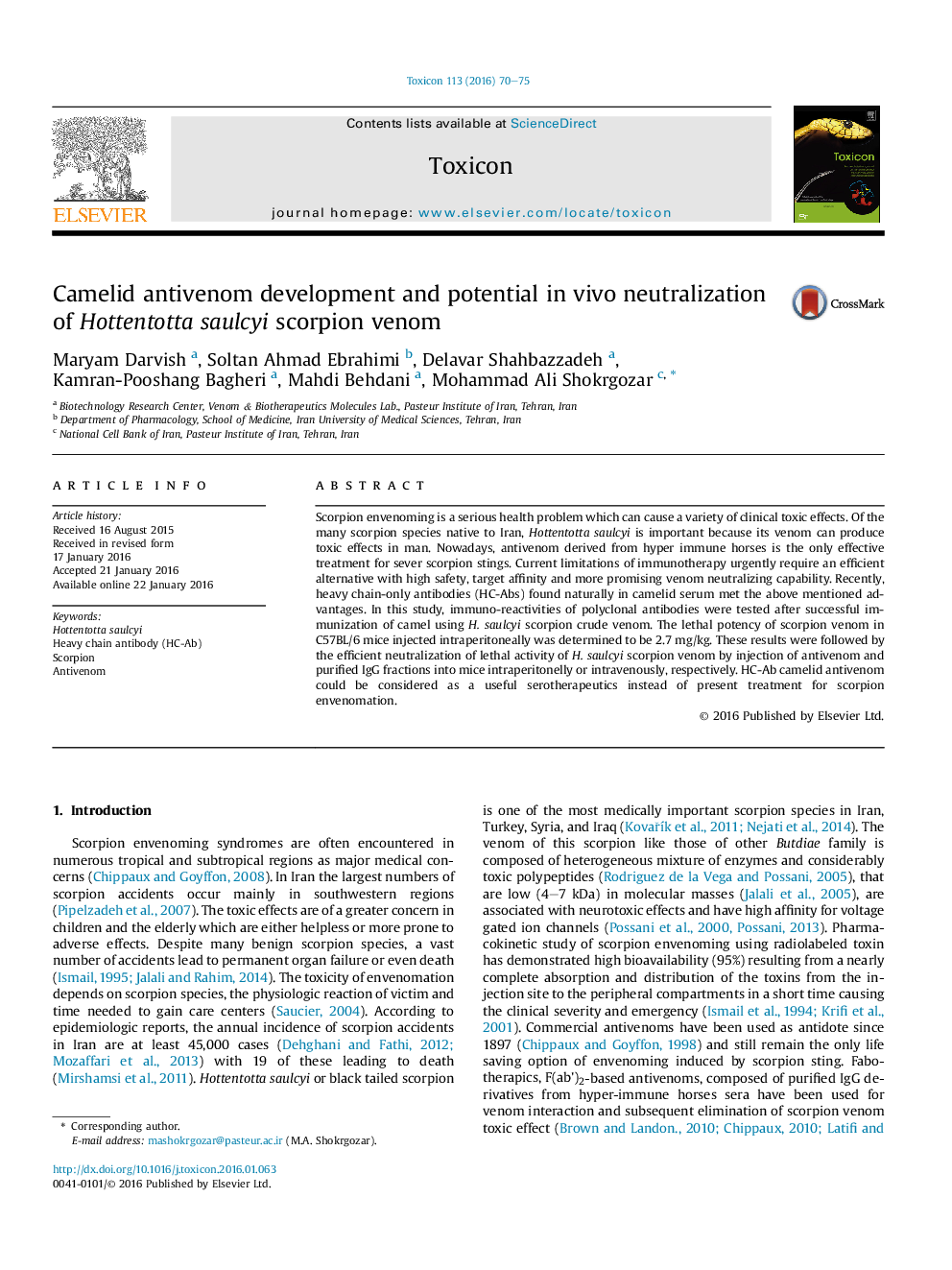| کد مقاله | کد نشریه | سال انتشار | مقاله انگلیسی | نسخه تمام متن |
|---|---|---|---|---|
| 2064132 | 1544123 | 2016 | 6 صفحه PDF | دانلود رایگان |
• S.C injection of Hottentotta saulcyi venom induces immune response in camel.
• I.P injection of antivenom neutralizes toxic effects of venom in mice.
• Antivenom was reactive to venom in antigen specific binding manner.
Scorpion envenoming is a serious health problem which can cause a variety of clinical toxic effects. Of the many scorpion species native to Iran, Hottentotta saulcyi is important because its venom can produce toxic effects in man. Nowadays, antivenom derived from hyper immune horses is the only effective treatment for sever scorpion stings. Current limitations of immunotherapy urgently require an efficient alternative with high safety, target affinity and more promising venom neutralizing capability. Recently, heavy chain-only antibodies (HC-Abs) found naturally in camelid serum met the above mentioned advantages. In this study, immuno-reactivities of polyclonal antibodies were tested after successful immunization of camel using H. saulcyi scorpion crude venom. The lethal potency of scorpion venom in C57BL/6 mice injected intraperitoneally was determined to be 2.7 mg/kg. These results were followed by the efficient neutralization of lethal activity of H. saulcyi scorpion venom by injection of antivenom and purified IgG fractions into mice intraperitonelly or intravenously, respectively. HC-Ab camelid antivenom could be considered as a useful serotherapeutics instead of present treatment for scorpion envenomation.
Journal: Toxicon - Volume 113, April 2016, Pages 70–75
